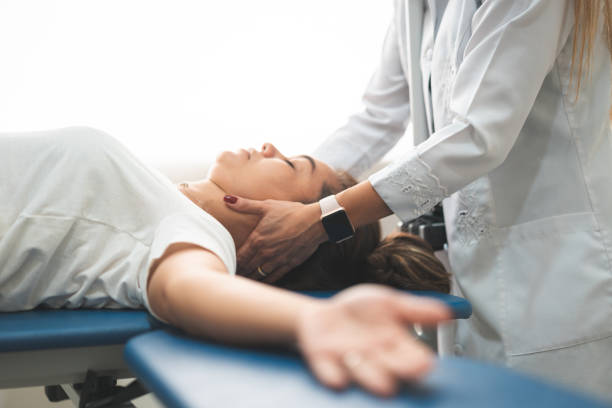Unveiling 2025 United States Clinical Trials: Cutting-Edge Sleep Apnea Therapies and Device Innovations
Obstructive sleep apnea affects millions in the United States. This article summarizes 2025 clinical trials nationwide exploring novel devices, neuromodulation, pharmaceuticals, and diagnostics, helping patients and caregivers learn about emerging, potentially safer treatment options.

Progress in Sleep Apnea Therapeutic Devices in 2025
Obstructive sleep apnea (OSA) results from repeated airway collapses during sleep, interrupting breathing. While continuous positive airway pressure (CPAP) machines remain the standard treatment, challenges like discomfort or poor tolerance persist for many patients. Consequently, clinical research increasingly investigates alternative devices and therapies aimed at enhancing patient comfort, adherence, and treatment success.
Innovative Hypoglossal Nerve Stimulation Implants
Among the latest notable advancements is hypoglossal nerve stimulation (HNS), which administers gentle electrical signals to the nerve controlling tongue movement to maintain airway patency during sleep without relying on external masks or machines.
In June 2025, Tampa General Hospital alongside USF Health Morsani College of Medicine joined 11 pioneering U.S. centers offering the Inspire V system — a next-generation FDA-approved HNS implant. This device streamlines previous versions by embedding its respiratory sensor within the implant itself, reducing components from three to two. Such simplification is designed to improve patient comfort and facilitate a less complex surgical procedure.
Enhanced programmability and diagnostic capabilities support tailored therapy adjustments, accommodating both home-based and hospital monitoring. Notably, clinicians at these centers have initiated Inspire V use in pediatric patients with Down syndrome, demonstrating its safety and therapeutic promise in varied populations.
Oral Pressure and Positional Therapy Innovations
In addition to HNS, clinical trials are evaluating oral pressure therapy devices that generate intraoral vacuum forces to reposition the soft palate, thereby mitigating airway blockage. Other ongoing studies focus on positional therapy devices that provide subtle vibratory cues to discourage sleeping on the back, a posture known to exacerbate OSA symptoms.
Some novel protocols combine device-based approaches with low-dose medications, aiming to enhance comfort and adherence by integrating mechanical and pharmacologic treatments.
Growing Pipeline of Therapeutics and Drug Developments
Over a dozen U.S. companies are actively pursuing new drug candidates and combination therapies targeting the underlying pathways of obstructive sleep apnea. These emerging treatments offer potential complements or alternatives to device-dependent interventions by enhancing airway muscle function, decreasing inflammation, or modulating neurological control of airway openness.
Clinical trials range across early to advanced phases, thoroughly assessing safety profiles, dosing parameters, and efficacy. Many employ polysomnography—the gold standard overnight sleep study—alongside patient-reported outcomes such as daytime alertness, quality of life, and cardiovascular indicators.
Innovations in Diagnostic Technologies in Sleep Apnea Research
Timely and precise diagnosis remains fundamental to effective management of sleep apnea. Increasingly, U.S. trials incorporate home sleep apnea testing (HSAT) combined with artificial intelligence-driven algorithms and wearable sensors. These advances aim to broaden diagnostic accessibility outside traditional sleep centers. Smart wearables offer continuous monitoring of physiological markers linked to breathing disruptions, enabling earlier detection and user-friendly ongoing assessment.
Such diagnostic tools also streamline patient identification for clinical trials, improving recruitment accuracy and efficiency.
Stringent Clinical Trial Designs and Participant Criteria
Safety remains paramount in 2025 sleep apnea research protocols. Prospective participants usually need confirmed OSA diagnoses based on apnea-hypopnea index thresholds and must fall within designated age ranges specific to each intervention. Trials frequently exclude individuals with uncontrolled cardiovascular conditions or complex comorbidities to minimize risks and ensure valid treatment assessments.
Certain studies focus on specialized cohorts, including patients resistant to conventional therapies or those exhibiting distinctive anatomical airway characteristics, facilitating targeted evaluation of novel interventions.
Advantages of Joining Sleep Apnea Clinical Trials
Participants typically benefit from extensive diagnostic evaluation and continuous monitoring at no cost. Receiving access to promising new treatments under expert clinical supervision offers a valuable chance to alleviate symptoms, especially when standard therapies have been ineffective or poorly tolerated.
Compensation varies depending on study demands and duration but often offsets travel expenses and time commitments related to follow-up.
Locating Innovative Sleep Apnea Clinical Trials Across the United States
Individuals interested in participating or remaining updated on emerging options can explore these resources:
- ClinicalTrials.gov, maintained by the National Library of Medicine, provides comprehensive listings of ongoing and upcoming trials, including eligibility and protocol details.
- Prominent academic hospitals and sleep centers frequently maintain trial databases.
- Patient advocacy groups, such as the American Sleep Apnea Association, connect patients with relevant research studies.
- Sleep medicine specialists may offer recommendations about appropriate clinical trials during consultations.
Careful review of trial eligibility, location, and participation requirements is recommended prior to enrollment.
Future Outlook: Toward Tailored, Multifaceted Sleep Apnea Care
The 2025 clinical trial environment in the United States illustrates a movement through personalized medicine, blending advances in neurostimulation, drug therapy, and diagnostics to enhance patient comfort, compliance, and long-term outcomes. This comprehensive approach holds potential to redefine standards of care for moderate to severe obstructive sleep apnea.
Ongoing research is set to expand available, effective treatments beyond conventional CPAP, offering renewed optimism for those affected by this common sleep disorder.
Sources
- Tampa General Hospital and USF Health Press Release, June 2025: TGH Inspire V System Launch
- DelveInsight Obstructive Sleep Apnea Clinical Trial Pipeline Report, July 2025: DelveInsight OSA Pipeline
- Additional insights synthesized from recent scientific publications and clinical research summaries.
Disclaimer: Availability of devices, clinical trial enrollment, and treatment options may differ by region and evolve over time. Readers should consult qualified healthcare providers or local medical facilities for individualized advice and the most current information.




